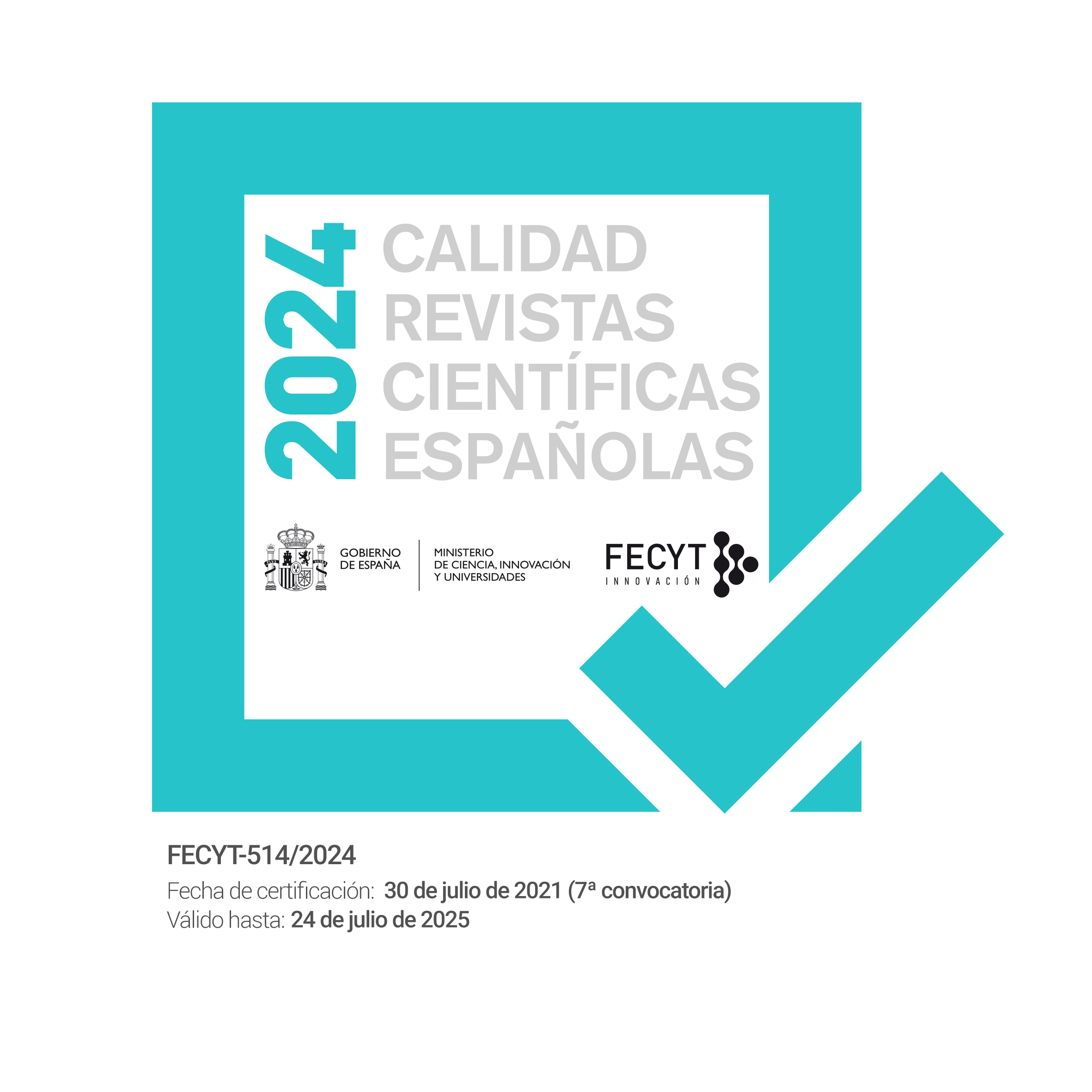"How did it get so dark?": Mapping Liminal Spaces in Music Videos of Billie Eilish
DOI:
https://doi.org/10.12795/REN.2024.i28.9Keywords:
darkness, liminal, transition, lyrics, in-betweenness, introspection, ambiguityAbstract
ABSTRACT: Darkness as it exists in one’s imagination and in the tangible realm is inextricably linked with a confusion of boundaries, a period of uncertainty and transition. By blurring the boundaries between familiar and unfamiliar, liminal spaces are safe yet intimidating. The paper analyses the lyrics and the music videos of songs “bury a friend,” “everything I wanted,” “NDA” and “Happier Than Ever” released by Billie Eilish from her albums When We All Fall Asleep, Where Do We Go? (2019) and Happier Than Ever (2021) to trace the configuration of liminal spaces. The dark visuals and lyrics that hint at fear, hatred and death act as liminal spaces where the numerous conflicts arising from separation, nightmares, violation of privacy, and intrusive thoughts are addressed, if not fully resolved. The darkness contributes to the evaluation of personal beliefs, aspirations and challenges in uncanny settings. Engaging with Eilish’s lyrics and music videos facilitates an investigation into the conceptualization of darkness in the popular American imagination
Downloads
References
ANIFTOS, Rania. “Billie Eilish’s ‘Everything I Wanted’ Was Originally About a Much Darker Subject.” Billboard, 3 Dec. 2020, www.billboard.com/music/pop/billie-eilish-everything-i-wanted-much-darker-subject-9334121/. Accessed 27 Jan. 2024.
ASTOR, Pete. “The Poetry of Rock: Song Lyrics Are Not Poems but the Words Still Matter; Another Look at Richard Goldstein’s Collection of Rock Lyrics.” Popular Music, vol. 29, no. 1, 2010, pp. 143–48. JSTOR, www.jstor.org/stable/40541482. Accessed 2 Oct. 2024.
BAILEY, Dale. American Nightmares: The Haunted House Formula in American Popular Fiction. Bowling Green State University Popular Press, 1999.
BARNSTONE, Willis. “On the Road from Dante to Jack Kerouac (Stopping by Frost, Pound, and Eliot).” Comparative Literature Studies, vol. 52, no. 2, 2015, pp. 233–53. JSTOR, https://doi.org/10.5325/complitstudies.52.2.0233. Accessed 3 Oct. 2024.
BROADHURST, Susan. Liminal Acts: A Critical Overview of Contemporary Performance and Theory. Continuum, 1999.
CARRAGHER, Ann. “Landscape, Liminality, Lament.” Liminality, Transgression and Space Across the World, edited by Basak Tanulku and Simone Pekelsma, Routledge, 2024.
COTTOM, Daniel. “Frankenstein and the Monster of Representation.” SubStance, vol. 9, no. 3, 1980, pp. 60–71. JSTOR, doi.org/10.2307/3683905. Accessed 4 Oct. 2024.
DOUGLAS, Mary. “The Idea of a Home: A Kind of Space.” Social Research, vol. 58, no. 1, 1991, pp. 287–307. JSTOR, http://www.jstor.org/stable/40970644. Accessed 21 Sep. 2024.
DOWNEY, Dara, et al. Landscapes of Liminality: Between Space and Place. Rowman and Littlefield International, 2016.
EILLISH, Billie. “all the good girls go to hell.” When We All Fall Asleep, Where Do We Go?, Darkroom/Interscope Records, 2019. YouTube, www.youtube.com/watch?v=-PZsSWwc9xA. Accessed 1 Oct. 2024.
--- and Khalid. “lovely.” 13 Reasons Why: Season 2 (Music from the Original TV Series), Darkroom/Interscope Records, 2018. YouTube, www.youtube.com/watch?v=V1Pl8CzNzCw. Accessed 3 Oct. 2024.
---. “bury a friend.” When We All Fall Asleep, Where Do We Go?, Darkroom/Interscope Records, 2019. YouTube, www.youtube.com/watch?v=HUHC9tYz8ik. Accessed 10 Jan. 2024.
---. “everything i wanted.” When We All Fall Asleep, Where Do We Go?, Darkroom/Interscope Records, 2019. YouTube, 24 Jan. 2020, www.youtube.com/watch?v=EgBJmlPo8Xw. Accessed 11 Jan. 2024.
---. “NDA.” Happier Than Ever, Darkroom/Interscope Records, 2021. YouTube, www.youtube.com/watch?v=OORBa32WFcM. Accessed 13 Jan. 2024.
---. “Happier Than Ever.” Happier Than Ever, Darkroom/Interscope Records, 2021. YouTube, www.youtube.com/watch?v=5GJWxDKyk3A. Accessed 11 Jan. 2024.
---. “hostage.” dont smile at me, Darkroom/Interscope Records, 2017. YouTube, 8 Oct. 2018, www.youtube.com/watch?v=skHbZBsS7hM. Accessed 27 Sep. 2024.
---. “when the party’s over.” When We All Fall Asleep, Where Do We Go?, Darkroom/Interscope Records, 2019. YouTube, 25 Oct. 2018, www.youtube.com/watch?v=pbMwTqkKSps. Accessed 27 Sep. 2024.
EMMITT, Helen V. “‘Drowned in a Willing Sea’: Freedom and Drowning in Eliot, Chopin, and Drabble.” Tulsa Studies in Women’s Literature, vol. 12, no. 2, 1993, pp. 315–32. JSTOR, doi.org/10.2307/463932. Accessed 29 Sep. 2024.
FAHEY, Tracy. “In Between Days: Domestic Liminality in the works of Aileen Barry.” Landscapes of Liminality: Between Space and Place, edited by Dara Downey, et al., Rowman and Littlefield International, 2016, pp.71-91.
FREUD, Sigmund. The Uncanny. Translated by David McLintock, Penguin Books, 2003.
GIESEN, Bernhard. “Inbetweenness and Ambivalence.” Horvath, et al., pp. 61-71.
GIRI, Hemlata. “The Perpetual Desire to Perish.” Teodorescu, pp. 262-280.
HARDING, Charlie. “Billie Eilish, the neo-goth, chart-topping teenage pop star, explained.” Vox, 19 Aug. 2019. www.vox.com/culture/2019/4/18/18412282/who-is-billie-eilish-explained-coachella-2019. Accessed 16 Jan. 2024.
HARVEY-JENNER, Catriona. “Billie Eilish just got a restraining order against obsessed fan.” Cosmopolitan, 22 Jun. 2020, www.cosmopolitan.com/uk/reports/a32930138/billie-eilish-restraining-order-fan/. Accessed 20 Feb. 2024.
HORVATH, Agnes, et al., editors. Breaking Boundaries: Varieties of Liminality. Berghahn Books, 2015.
---. Introduction. Horvarth, et al., pp. 1-8.
IDDON, Martin, and Melanie L. Marshall, editors. Lady Gaga and Popular Music: Performing Gender, Fashion, and Culture. Routledge, 2014.
KUMAR, Krishan, and Ekaterina Makarova. “The Portable Home: The Domestication of Public Space.” Sociological Theory, vol. 26, no. 4, 2008, pp. 324–43. JSTOR, www.jstor.org/stable/20453115. Accessed 2 Oct. 2024.
KUNDU, Devaleena. “The Paradox of Mortality: Death and Perpetual Denial.” Teodorescu, pp. 8-23.
LADERMAN, David. “What A Trip: The Road Film and American Culture.” Journal of Film and Video, vol. 48, no. 1/2, 1996, pp. 41–57. JSTOR, www.jstor.org/stable/20688093. Accessed 3 Oct. 2024.
MORRIS, Christopher. “The Reflexivity of the Road Film.” Film Criticism, vol. 28, no. 1, 2003, pp. 24–52. JSTOR, www.jstor.org/stable/44019198. Accessed 3 Oct. 2024.
NG, Andrew Hock Soon. Women and Domestic Space in Contemporary Gothic Narratives: The House as Subject. Springer, 2016.
ORGERON, Devin. “Revising the Postmodern American Road Movie: David Lynch’s The Straight Story.” Journal of Film and Video, vol. 54, no. 4, 2002, pp. 31–46. JSTOR, www.jstor.org/stable/20688392. Accessed 21 Sep. 2024.
PUNTER, David. “On the Threshold of Gothic: A Reflection.” The Gothic and Theory, edited by Jerrold E. Hogle and Robert Miles, Edinburgh UP, 2019, pp. 301-319.
SCHULTZE, Sydney. “The Tradition of the Drowning Woman in the Background Of ‘Anna Karenina.’” Russian Language Journal / Русский Язык, vol. 36, no. 123/124, 1982, pp. 75–87. JSTOR, www.jstor.org/stable/43909432. Accessed 29 Sep. 2024.
STENNER, Paul. Liminality and Experience: A Transdisciplinary Approach to the Psychosocial. Palgrave Macmillan, 2017.
TEODORESCU, Adriana, editor. Death Representations in Literature: Forms and Theories. Cambridge Scholars Publishing, 2015.
TODOROV, Tzvetan. The Fantastic: A Structural Approach to a Literary Genre. Translated by Richard Howard, Press of Case Western Reserve University, 1973.
TRIGG, Dylan. The Memory of Place: A Phenomenology of the Uncanny. Ohio UP, 2013.
VAN GENNEP, Arnold. The Rites of Passage. Translated by Monika B. Vizedom and Gabrielle L. Caffee, University of Chicago Press, 1960.
VERNALLIS, Carol. Experiencing Music Video: Aesthetics and Cultural Context. Columbia UP, 2004.
WOLFF, William I., editor. Bruce Springsteen and Popular Music: Rhetoric, Social Consciousness, and Contemporary Culture. Routledge, 2017.
YOUNG, Arlene. “The Monster Within: The Alien Self In ‘Jane Eyre’ And ‘Frankenstein.’” Studies in the Novel, vol. 23, no. 3, 1991, pp. 325–38. JSTOR, www.jstor.org/stable/29532797. Accessed 5 Oct. 2024.















